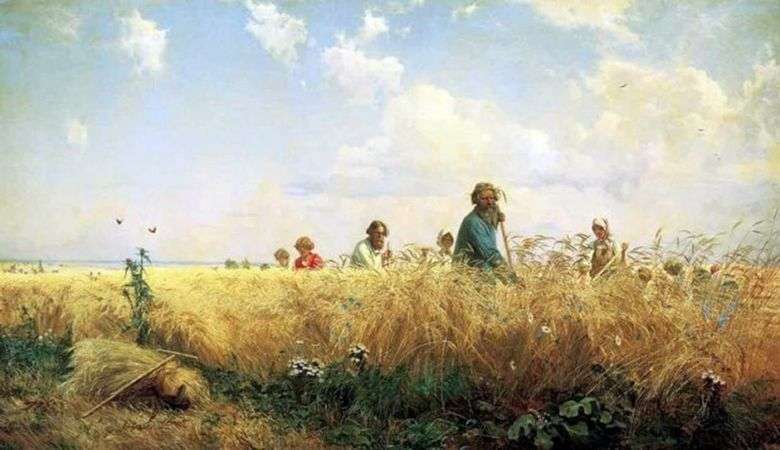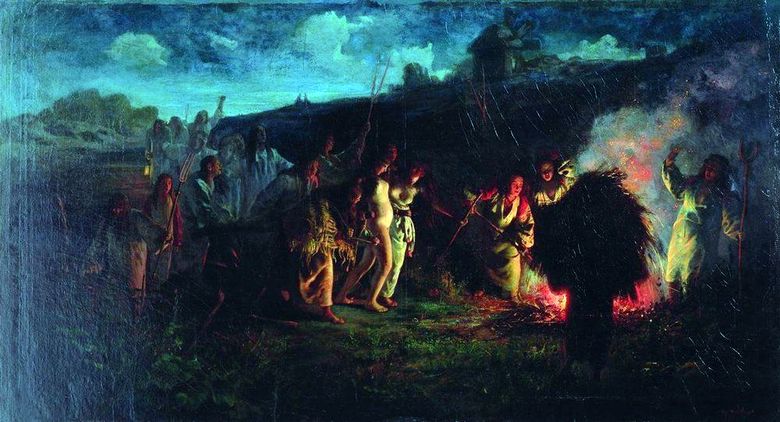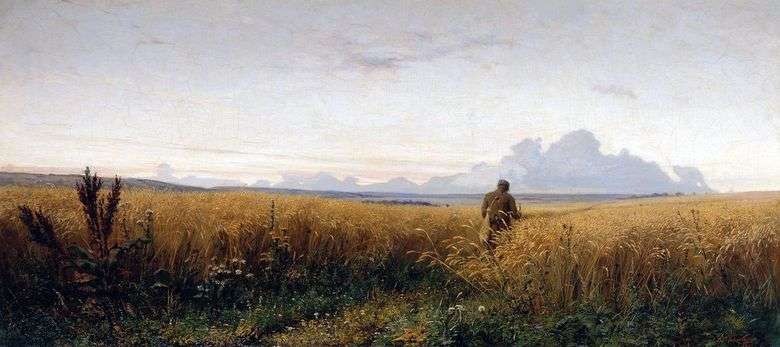
The painting of Myasoedov “Mowers” was painted in 1887. Her artistic value was highly appreciated by Emperor Alexander III, who bought the canvas for his collection.
We see in the picture a group of peasants among the rye while haying. It is as if summer heat emanates from the canvas, the bright blue of the sky flows into the yellowness of the ears, the clouds also have a warm yellowish tint. The heroes of the picture are not only the peasants and hay directly, we also see several birds, butterflies, cornflowers, burdock and daisies in the foreground, we feel the sun, as if permeating every inch of canvas.
Peasants merge with nature. If you look closely, you can see on the head of one of them a wreath woven from freshly mown ears. He seems to be crowned with this wreath, becoming at this very moment and precisely at this place the king, the main character, the most experienced mower, leading the rest, showing what and how to do.
In the lower left corner of the picture we can observe a sheaf of rye with a rake lying on it, a plate with bread is located nearby. These attributes symbolize work and rest.
The peasant country life appears in all its glory: everything is young and old, and mustache grandfather, curly youth, and girls in headscarves. After all, if you do not have time to mow the harvest on time, because of the rain and bad weather you can remain completely without bread, the peasants understand this very well and go out to the field with the whole family.
It should be noted that the figures of mowers are arranged, as it were, in ascending order, from the younger to the older. We do not feel that it is difficult for them, we do not feel the exhausting heat, we see only the beauty of work and freedom, the expanse of the Russian field, celebration and joy. For some reason, I want to believe that at this moment the peasants are singing a song or having cheerful conversations.
 Road in the Rye by Grigory Myasoedov
Road in the Rye by Grigory Myasoedov Zemstvo Lunches by Grigory Myasoedov
Zemstvo Lunches by Grigory Myasoedov Swallowing by Grigory Myasoedov
Swallowing by Grigory Myasoedov Kostsy (tiempo de sufrimiento) – Grigory Myasoedov
Kostsy (tiempo de sufrimiento) – Grigory Myasoedov Kossa (Temps de souffrance) – Grigory Myasoedov
Kossa (Temps de souffrance) – Grigory Myasoedov Autumn morning by Grigory Myasoedov
Autumn morning by Grigory Myasoedov Sentir – Grigory Myasoedov
Sentir – Grigory Myasoedov Camino en el centeno – Grigory Myasoedov
Camino en el centeno – Grigory Myasoedov